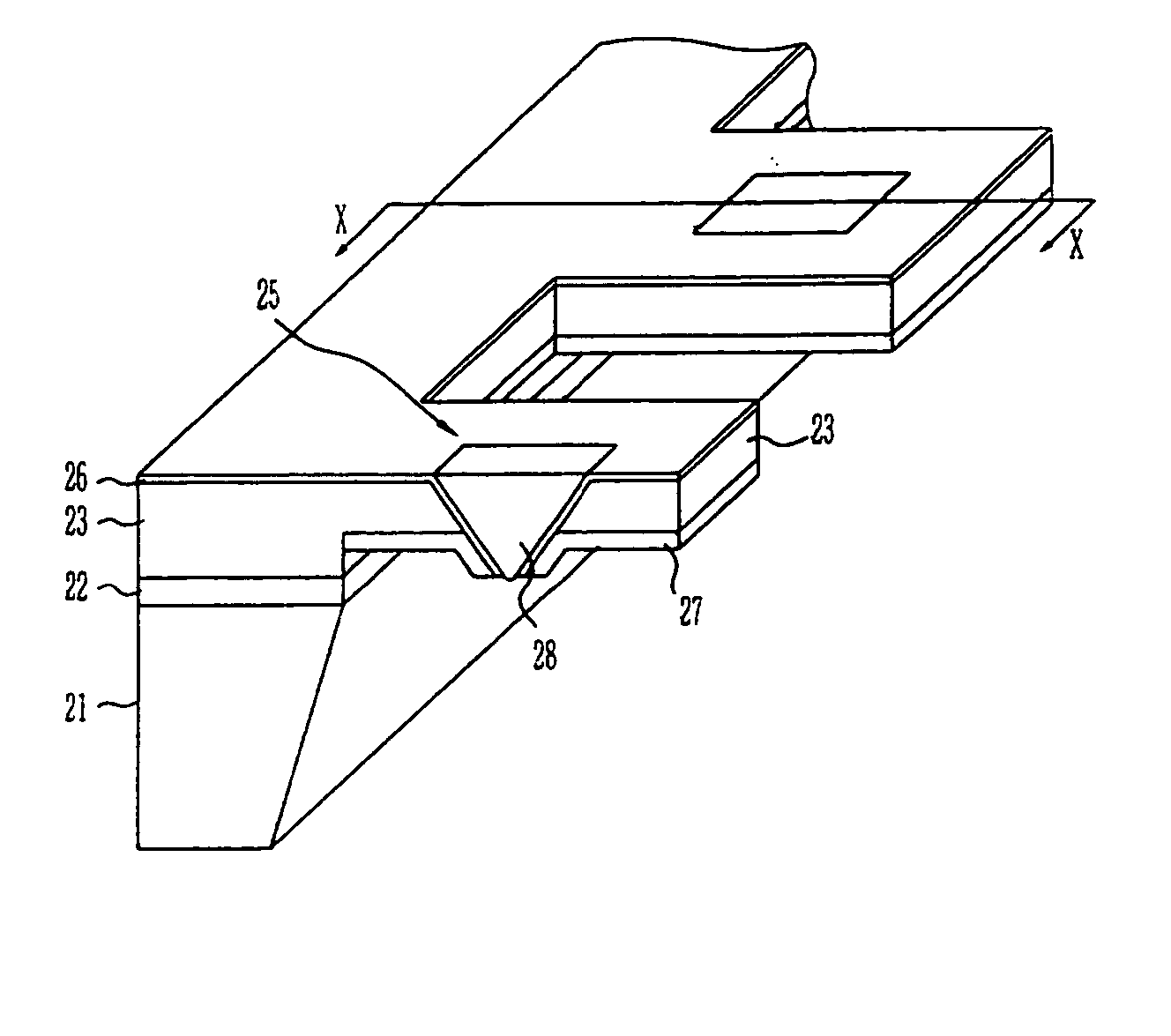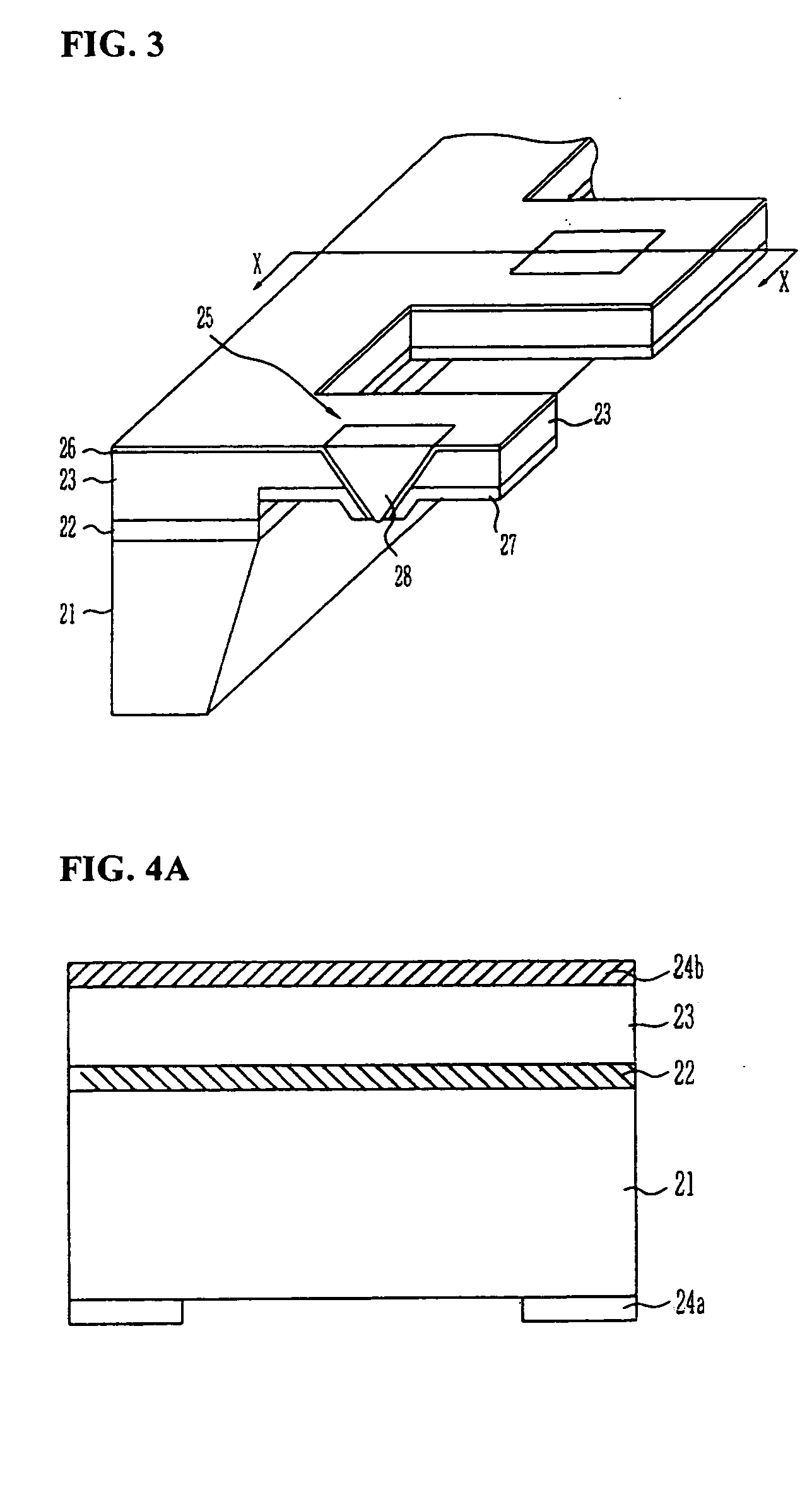Head for recording and reading optical data and method of manufacturing the same
a technology for optical data and optical fiber, which is applied in the direction of heads with metal sheet cores, manufacturing tools, instruments, etc., can solve the problems of limiting the amount of information recorded with a high density due to diffraction of light, difficult to arrange information in plurality, and mechanically very fragile, so as to improve the throughput of the probe and reduce the amount of beams
- Summary
- Abstract
- Description
- Claims
- Application Information
AI Technical Summary
Benefits of technology
Problems solved by technology
Method used
Image
Examples
Embodiment Construction
[0033] The present invention will be described in detail by way of a preferred embodiment with reference to accompanying drawings, in which like reference numerals are used to identify the same or similar parts.
[0034]FIG. 3 is a perspective view of a head for recording / reproducing optical data according to the present invention.
[0035] Referring now to FIG. 3, the head for recording / reading optical data is mainly divided into two sections: a lower structure and an upper structure. The lower structure includes a silicon substrate 21 and finally becomes a holder of the head. The upper structure has a reverse-trapezoid shape and includes a probe having a plurality of apertures 25 filled with a non-linear material 28 and a thin metal film 27, wherein an end portion of the probe is connected to the lower structure.
[0036] The upper structure further includes a silicon deposition layer 23. A silicon oxide film 22 is formed at the boundary of the lower structure and the upper structure. A...
PUM
| Property | Measurement | Unit |
|---|---|---|
| length | aaaaa | aaaaa |
| size | aaaaa | aaaaa |
| temperature | aaaaa | aaaaa |
Abstract
Description
Claims
Application Information
 Login to View More
Login to View More - R&D
- Intellectual Property
- Life Sciences
- Materials
- Tech Scout
- Unparalleled Data Quality
- Higher Quality Content
- 60% Fewer Hallucinations
Browse by: Latest US Patents, China's latest patents, Technical Efficacy Thesaurus, Application Domain, Technology Topic, Popular Technical Reports.
© 2025 PatSnap. All rights reserved.Legal|Privacy policy|Modern Slavery Act Transparency Statement|Sitemap|About US| Contact US: help@patsnap.com



